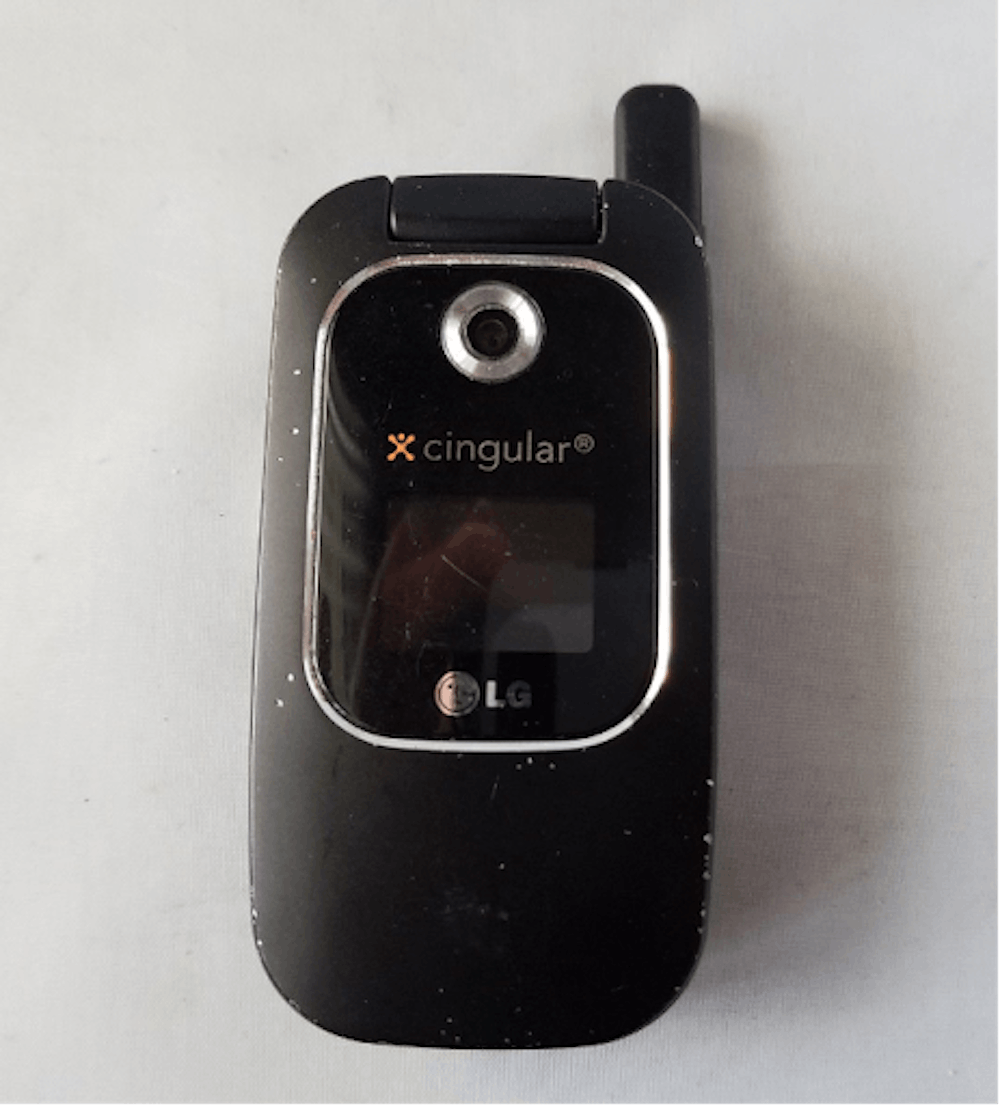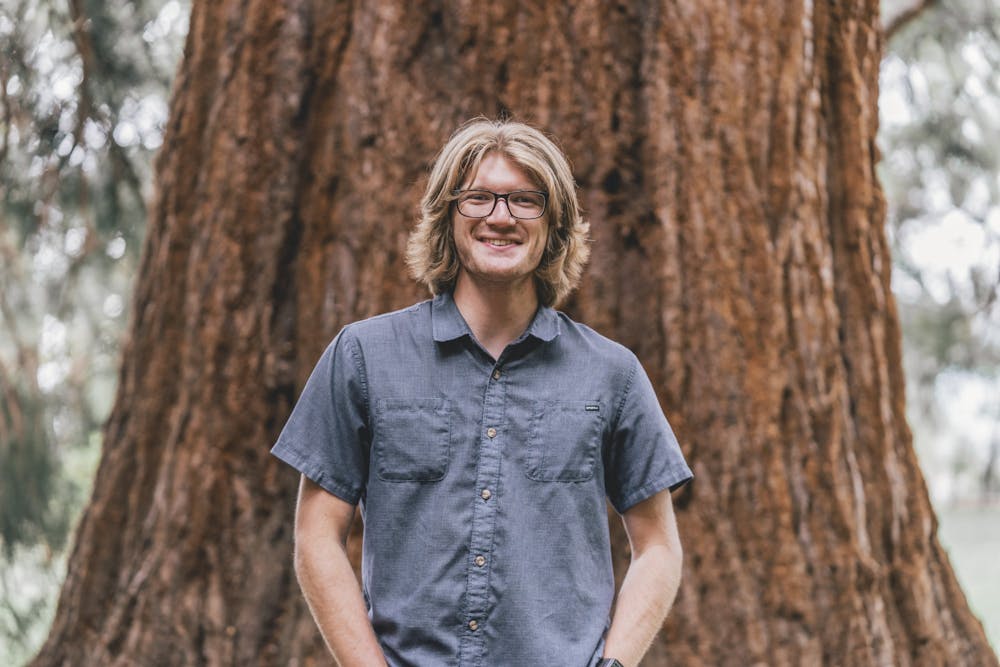When I was in eighth grade, I was the last of my friends to get a cell phone. All my friends had shiny new iPhones with touchscreens and various social media apps that I could scarcely dream of. But I didn’t get a new iPhone then. My parents gave me a Pantech Breeze III P2030 Flip Phone. At the time, I was just happy to have a phone at all. Many of my friends had had cell phones since fifth grade while I still had to call on the family land line. I was finally free to call and text at my leisure.
As I entered my freshman year of high school, I was the object of occasional ridicule in the parking lot when I called my parents to come pick me up. My classmates would say “What is this, the 90s?” and chuckle their smug little chuckles. On the outside, I laughed too, but on the inside I bristled at the ribbing.
All I wanted was to fit in, to experience the same kind of interconnectivity and ease of use that my smart phone wielding friends did. Oh, how naive I was.

My dad’s old phone and my first cell phone.
Later my freshman year, I was playing with the device in my hand and accidentally let it go. I watched it spin through the air — LCD screen on the front glittering in the setting sun — and bounce once before clattering to the concrete, inert. I rushed to pick it up and opened the phone to survey the damage. The buttons still lit up but the screen was dark as night. I pressed every button on the keypad but it wouldn’t light up (sorry, Mom and Dad).
A realization sprung up out of the back of my mind. “Maybe now I’ll get an iPhone!” I thought, secretly elated at the idea. At the front of my mind though, I realized I needed to borrow my friend’s phone to call my mom.
In the same month, and much to my dismay, my parents replaced the busted Pantech Breeze with an LG CU400 Cingular Wireless flip phone. It had a little antennae at the top and a keypad with 24 buttons.

My second flip phone, after I broke the first.
Let me explain the features of these two flip phones. Due to their small size, about three and half inches when closed, the phones had a limited number of keys on the keypad. Most of these keys were assigned to numbers because a phone mostly was for calling back then. When you wanted to text someone though, as I and my friends often did, it required concentrated effort. I know people who can type on their smartphone’s ethereal digital keyboards without looking, but to type on a flip phone keypad, I needed focus.
There were twelve keys on the CU400 keypad. Ten of those were numbered and eight of them could be used to type out a text message. The number 2 was assigned the letters ABC, 3 had DEF, and so on, until you got to 7. The 7 and 9 keys had the distinct privilege of possessing four letters, while 8 had three like the others. The other two keys were for the star (*) and pound (#) signs.
To type the word “excited” I had to press five keys 14 times. To be verbose with a keyboard like this was to use up precious hours of your day. No wonder abbreviations proliferated when this technology was the norm. The iPhone 13 has a measly three buttons used for volume and turning off the screen.
Now the convenience of smartphones cannot be understated. Having a phone, a music player, a navigation device and a high quality digital camera all in the palm of your hand is incredible. In comparison to a flip phone, the technology inside the most recent line of smartphones seems like something out of science fiction.
When the first iPhone came out in 2007, it must have felt the same way. Reading an old New York Times article about the first iPhone is a real trip. The reviewer marvels at being able to check your email, browse the web and call your grandma all on the same device. (Also, when was the last time you had to worry about your ‘minutes’ when you called someone?)
These are no doubt things we take for granted here in the future. No more paltry passwords to read your text — the newest iPhone now recognizes your face, when just a few years ago it could recognize your fingerprint.
Alongside all of the technological advances of smartphones came the parallel proliferation of social media apps. Now we don’t just text or call, we can post a picture or a thought to everyone in our friend groups, our third grade teachers and our favorite celebrities all at once. This too seemed like a miracle at the time; we all stared, slack jawed and wide-eyed, as the years went by and each year came a new smartphone with plenty of new features and ways to steal your attention.
We can organize people on the other side of the world instantaneously. With everything from entertainment to family reunions in the palm of your hand, it's no wonder the average American spends 5.4 hours a day on their phone. Despite that — and it sounds cliche to say it at this poin t —humans have seldom been worse mentally.
Humans were not designed to verbalize every thought we ever had in our heads. It only became possible in the last 15 years, and look where it’s gotten us so far: Not only are anti vaxxers turning out to be a sizable portion of the population, but they can organize to form convoys numbering in the thousands. Another subset of the population thinks the earth is flat. A third of people don’t believe in climate change. All pretty depressing things.
Now, this isn’t all the fault of smartphones or social media, I’ll admit that. Humans are pretty easily persuaded, and though we’re more interconnected than ever, we haven’t changed much. Recent studies have found carrying around all that interconnectivity in your pocket has had adverse effects on people’s mental health, though. Participants in those studies are cited as having increased mental distress, especially in young girls, but even adults attested to depressive symptoms and sleep problems.
I can attest to wasting half an hour every morning this semester on Instagram. It never makes me feel very good though. I crawl out from under the covers having learned very little about the world or myself. At most, I can say it is a convenient way to kill a few minutes before my alarm goes off for the third time.
This is all to say that that wouldn’t happen if I had my old LG CU400 back. At most, I could play Tetris on that thing. I couldn’t watch YouTube, send emails or listen to music on it, but at the same time I didn’t need to. There were other times for that.
I just needed the 15 minutes it took to send a text message containing one complete sentence, and as inconvenient as that was, it slowed me down. I was hardly ever overwhelmed or anxious when I opened a flip phone. I certainly have been when I look over at the iPhone 6S sitting on my desk. (Plus, no smartphone has ever given me the same satisfaction of flipping the screen closed when hanging up a call.)
When I had a flip phone, I spent less time looking at a screen in the morning and more time looking at the way the sun came through my bedroom window as a parallelogram. When I rolled over for a few more minutes of sleep, I didn’t grope around to snooze my cell phone, I snoozed an alarm clock whose only role was to tell me the time and wake me up, not call my mom and text my friends and tell me that I had a dentist appointment, all the while reminding me that the planet is warming and it's a pandemic and did I hear about the latest inanity the new president tweeted? Also you didn’t get 10,000 steps today. What's the deal with that? Here’s 10 tips to keep your car engine clean! Etcetera and anon.
My first cell phone did far, far less than my smartphone does. I was probably better off for it.
Will Mulligan is a reporter for The Beacon. He can be reached at mulligan22@up.edu.
Have something to say about this? We’re dedicated to publishing a wide variety of viewpoints, and we’d like to hear from you. Voice your opinion in The Beacon.








